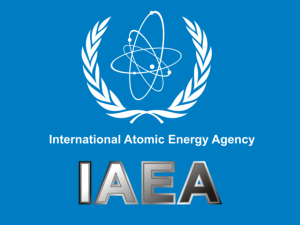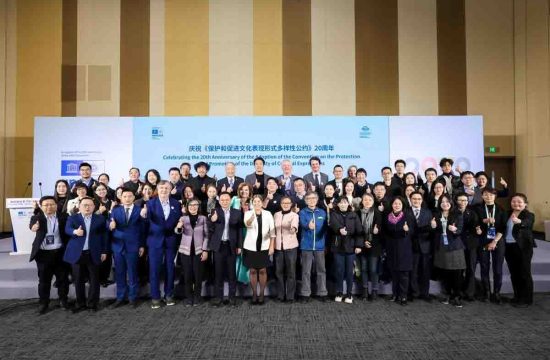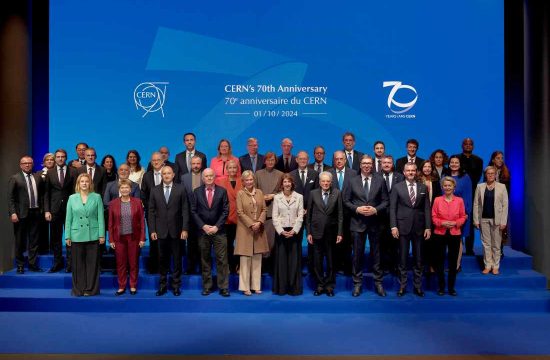 A new irradiator inaugurated in Mauritius will help the island nation step up its fight against fruit flies threatening valuable crops and also support other African nations in controlling insect pests causing major economic losses to farmers.
A new irradiator inaugurated in Mauritius will help the island nation step up its fight against fruit flies threatening valuable crops and also support other African nations in controlling insect pests causing major economic losses to farmers.
Partly funded by the International Atomic Energy Agency (IAEA), the EUR 238,000 machine will enable Mauritius to more than double its capacity to use the Sterile Insect Technique (SIT) – a kind of birth control for such pests – to suppress fruit flies.
In another IAEA-backed measure to strengthen similar efforts across Africa, Mauritius today also launched its first academic training programme in SIT, to be held annually. This four-month post-graduate certificate course goes beyond its borders. The first intake will include students from Botswana, Burkina Faso, Ghana, Kenya, Madagascar, Mauritius, Morocco, Namibia, Nigeria, Sudan, Tanzania and Zambia.
“The new irradiator and facility will benefit not only Mauritius but also other African Member States, and the country will act as a training centre for SIT in the region,” Shaukat Abdulrazak, Director of the Africa Division of the IAEA’s Technical Cooperation Department, told the inauguration event in Reduit, Mauritius.
SIT is a proven cost-effective and environmentally- friendly technique used in countries across the world to suppress insect pests, such as fruit flies. The technique helps to guarantee the quality of fruits and vegetables and reduces pesticide use. Insects are mass-reared in special facilities, irradiated and released in the field at weekly intervals, with the ultimate goal of significantly reducing their population.
[pullquote]The IAEA procured and organized the shipment and installation of the new irradiator, which will now help Mauritius produce and release up to 1 million sterile flies per week, up from 400,000.[/pullquote]
“There are eight species of fruit flies in Mauritius, four of them attacking vegetables and four species attacking fleshy fruits,” said Mahen Kumar Seeruttun, Minister of Agro-Industry and Food Security of Mauritius. He estimates that 160 million Mauritian Rupees – over EUR 4 million – are lost annually as a result of the damage caused by fruit flies.
Through its technical cooperation programme and its Joint United Nations Food and Agriculture Organization/IAEA Division, the IAEA has for decades been supporting the application of SIT to manage insect pests around the world. Support is delivered through training, equipment and research.
The IAEA procured and organized the shipment and installation of the new irradiator, which will now help Mauritius produce and release up to 1 million sterile flies per week, up from 400,000. “The economic consequences of fruit flies are so great that countries free of such infestations prohibit the import of produce from countries where the pests are present,” Abdulrazak said. “This is particularly hard-hitting to the economies of most African countries, which rely heavily on agriculture exports.”
With the new irradiator, Mauritius plans to mainly combat melon flies (Bactrocera cucurbitae) and peach flies (B. zonata). These insects lay eggs under the skin of the fruit or vegetable, which develop into larvae that destroy the crops. Melon flies attack cucurbits, which are plants of the gourd family – such as melon, pumpkin, squash, and cucumber – that account for about 30 percent of cultivated areas in the Indian Ocean nation. “The experience gained and technical expertise developed by national counterparts through the implementation of past and present IAEA- supported technical cooperation projects are enabling us to achieve the objectives of my ministry,” said Mr. Seeruttun. In the absence of fruit flies, cucurbit production in the country could rise to 32,000 tonnes per year from the current 24,000 tonnes per year, he added.
The new SIT infrastructure is the culmination of a four-year IAEA technical assistance effort, and will also support the potential use of this nuclear technique for the control of mosquitos, such as Aedes aegypti, which transmits the Zika virus, chikungunya and dengue fever.








